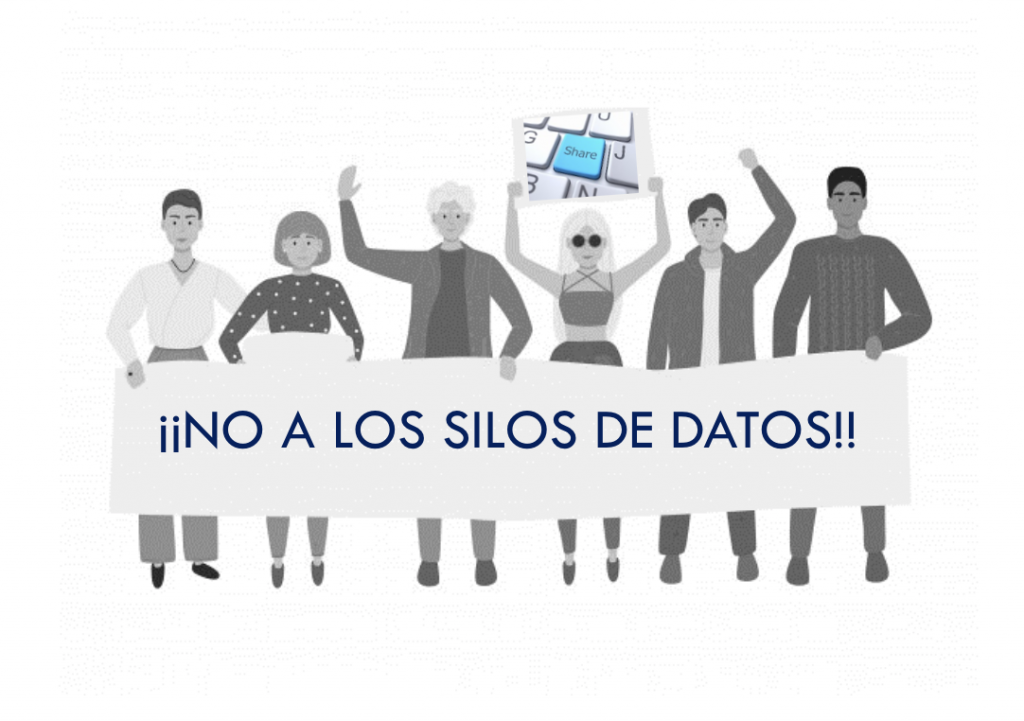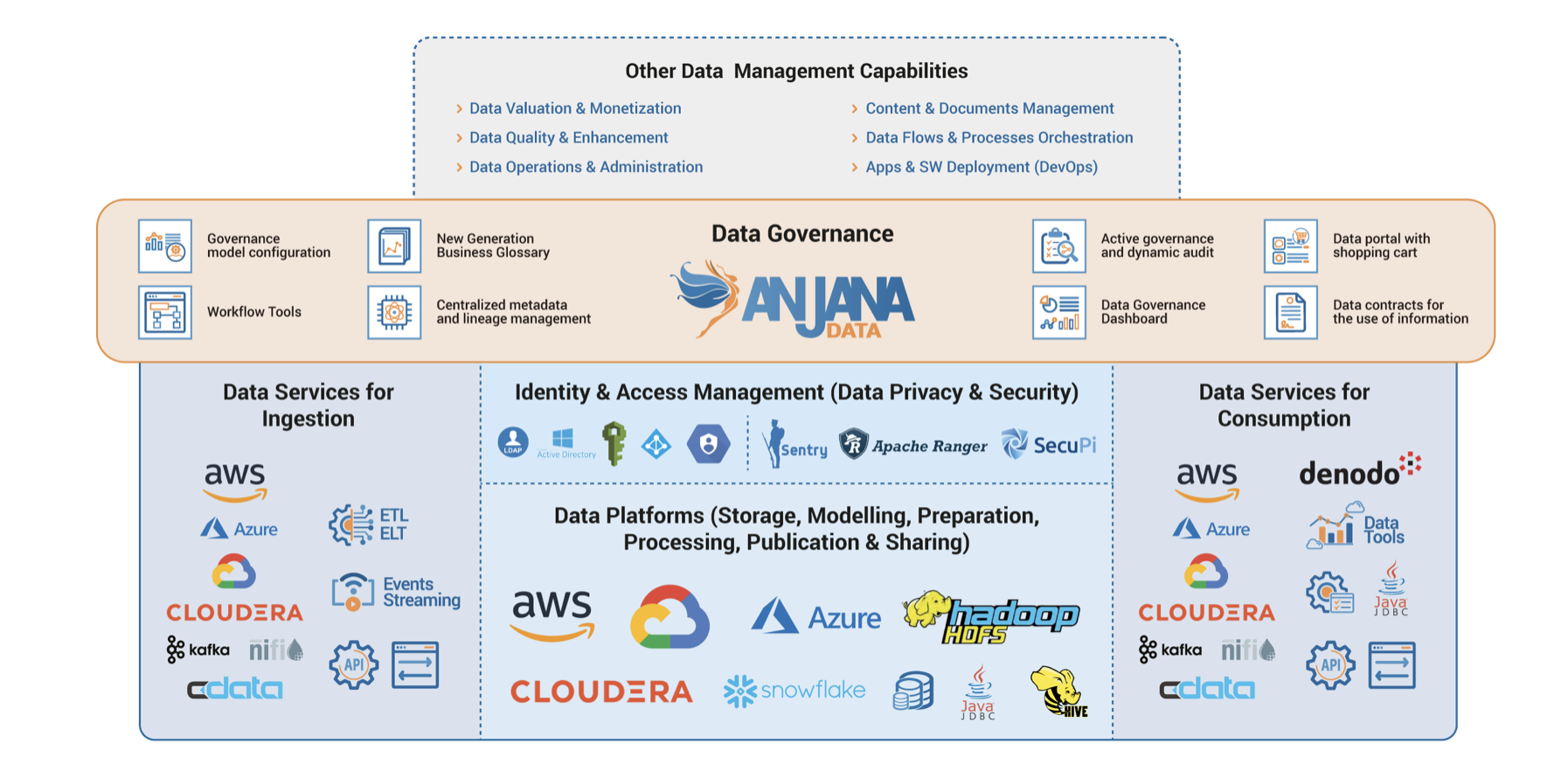Unlike many other assets, data has the essential feature that its value increases the more and the better it is shared. That’s why sharing data is vital for an organization to become data-driven. However, establishing the mechanisms to do so in a safe, governed, effective and efficient manner is one of the greatest challenges of a data governance program.
In this context, we come from a world where data was organized in silos guarded by pure IT teams (Systems, DBAs, …) and these were served in the form of reports, metrics or projects fully cooked and with long development times; This is something that, to this day, has become totally obsolete and is already breaking up in many organizations.
We have been living for years a technological torrent that brings new capabilities in data processing (Big Data, Cloud, IoT, Advanced Analytics, AI & ML, …), we have a greater data culture of people and organizations, there is more training in data, data literacy and data storytelling, new skills are acquired to consume data and generate insights in business areas thanks to more and better data analysts and scientists, … so it is clear that the data is no longer something that can be guarded by pure IT teams and served in long development times but something that must be put at the service of the business (people or algorithms) for rapid and efficient decision-making that generates a competitive advantage.

Once we are clear about the benefits of sharing data, this leads to a dilemma between two parties: on the one hand, we need to enhance the use and reuse of data and for that we need to democratize its access; and on the other hand, we have to have control over the use that is made of that data to ensure regulatory compliance and the safety of those data. In the end, there is always that turning point that makes us reflect on the different paths involved in sharing data.
That is the middle point that is achieved with the entry into play of the Data Sharing Agreements (DSAs) to share data in an environment where we feel comfortable and there is a government. In this sense, we always have to seek the balance between giving value to the business and complying with the regulation; follow what the business needs, but at the same time not having great technological costs; enhance self-service, but having control of the information that is being made available to the rest; and then also pursuing innovative and disruptive solutions without forgetting that the traditional cannot disappear overnight.

Every time we talk about sharing data, what we mean is to make information available by producers for use by consumers, and in that process there are roles that have to ensure that everything works correctly. In the end, each person or type of role will have their profile, their visions and needs; and thanks to DSAs we will be able to cover all of them.
If we look at a data consumer’s point of view, they need to have access to knowledge of the data because of its context and meaning; a guarantee of the quality of the data used for decision-making; compliance with SLAs by producers; and regulatory compliance from the point of view of use.
From the point of view of a producer, this seeks to control the production processes and the availability of their data, prepare and certify the data that will be shared, know which processes and which people are using the data and for what, and comply with data regulation and regulations.
From a cross-cutting management and monitoring point of view, the objectives will be: maximising the ROI of data initiatives, increasing efficiency in process productivity, automating and reducing operational costs and risks, achieving a homogeneous view of information consumption and ensuring regulatory compliance.

A DSA is basically a mechanism for sharing data between producers and consumers in an agile and personalized way, facilitating regulatory and regulatory compliance in the use of data. In addition, thanks to DSAs we can standardize the way in which data and information access are requested, granted and managed, gaining in efficiency and productivity.
On the other hand, DSAs are represented as logical assets that group different technical data assets or Datasets (tables, files, views, documents, events, …) so they offer stakeholders a new experience of sharing information by facilitating all the technical complexity below that data sharing’ by containing all the metadata information of the technical assets they encompass. Thus, the DSAs bring the data closer to the business consumer, abstracting him from all the underlying technical concepts.
Finally, DSAs also allow for the definition, implementation and operation of the Data Contracts in order to provide the necessary flexibility to land the different data access policies to be implemented for each of the particular cases of information sharing, since sharing public data from 3 years ago is not the same as sharing the address where citizens live or sharing confidential information about an organization’s strategy. There are times when a Data Contract can serve multiple purposes and multiple consumers but there are other times when specific Data Contracts are needed for very specific cases.

Incorporating innovative elements in data governance such as DSAs is not an easy task, but if you’re really interested and want to do it, the best thing is to have the right people, the right processes and the necessary technology. If you want to know more about how to operate DSAs, different use cases and success stories, take a look at this document, this webinar or contact us.